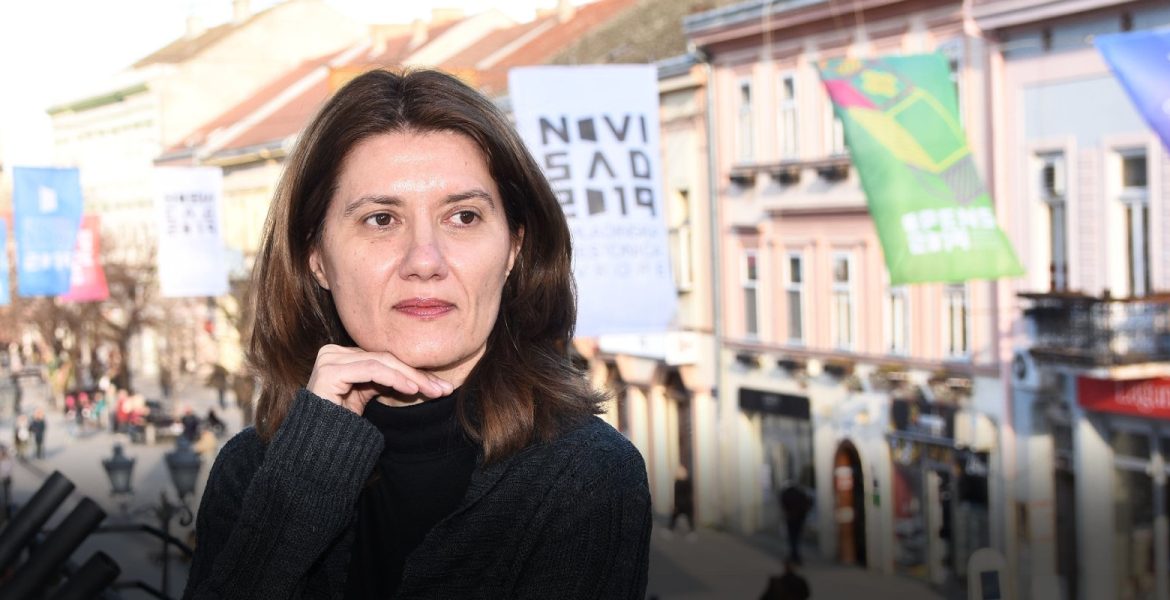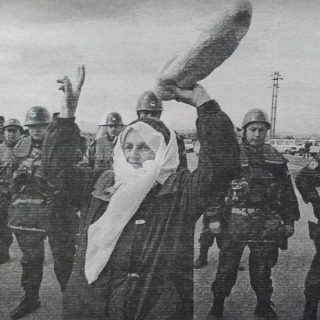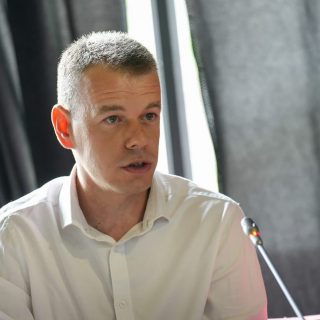“We will never get an answer—who was the one who agreed and eliminated us. And if I am alive in twenty years, I know that I won’t know more than I do today.”
This statement was made five years ago, and two decades after the death of workers of Radio-Television Serbia (RTS) in the NATO bombing of the building on Aberdareva Street in Belgrade, by Dragan Šuković from the RTS electronic graphics team, who survived the attack.
Jelica Munitlak (28), makeup artist; Ksenija Banković (28), video editor; Darko Stiomenovski (26), technician; Nebojša Stojanović (27), technician; Dragorad Dragojević (27), security worker; Dragan Tasić (31), electrician; Aleksandar Deletić (31), cameraman; Slaviša Stavanović (32), technician; Siniša Medić (32), program designer; Ivan Stukalo (34), technician; Dejan Marković (39), security worker; Milan Joksimović (47), security worker; Branislav Jovanović (50), technician; Milan Janković (59), precision mechanic; Tomislav Mitrović (61), program director; Slobodan Jontić (54), editor.
These are the names of sixteen workers who died in the NATO bombing of RTS at two hours and six minutes after midnight on April 23, 1999. Their names are inscribed on a monument erected by their families in Tašmajdan Park, along with the question: “Why?”
That question remains unanswered, as those who could have saved their lives and failed to do so have not been held accountable to this day.
Instead of justice, their sacrifices are used in cynical state lamentations held once a year to feed nationalist politics. How else to create the rhetoric of centuries of suffering, proud resistance, and a heavenly people against whom all the evils of the world have gathered… if not on the cult of martyrdom?
And that is why the question inscribed on the monument is rhetorical. Because we know the answer, but it spoils the image built on the cult of martyrdom. Just like some other unspoken answers: about the massacre at the Panda cafe in Peć, the abduction in Sjeverin, the refrigerator truck in Lake Perućac, the mass grave in Batajnica… and many other bloody places from wars in which we did not participate.
All these answers bear the signature of the same ideology. And there is a conspiracy of silence around them. And many are complicit in that conspiracy.
When the majority agrees to share responsibility for crimes, there is no individual guilt. That is why there are no court trials, confrontations, or condemnation of violent policies.
Only the director of RTS at the time, Dragoljub Milanović, was held accountable for the deaths of the RTS workers. In 2002, he was sentenced to 10 years in prison for the crime of “endangering safety” because, as stated in the verdict, he did not take measures to protect and evacuate employees and equipment.
Although it is hard to believe he made such a decision independently and on his own initiative, very few people ever raised that question. There is neither justice nor empathy for the family members of the victims. Just as there is no empathy for all those families and victims before and after the RTS bombing. Because violence in society did not end with the cessation of hostilities. It couldn’t, as the policy of violence never faced a majority resistance, neither in political opposition nor in society as a whole.
For twenty-five years, the families of the media workers killed in the bombing of RTS have demanded answers from the state regarding whether officials knew the attack would happen and whether the lives of their loved ones could have been saved.
“Our agony lasted a week. Ksenija was found only on April 29, and we buried her on May 1. On the same day, Tomislav Mitrović was also buried. And on that very day, RTS general director Dragoljub Milanović was attending his son’s wedding. Just eight days after 16 of his own people were killed,” Ksenija’s mother Borka Banković told the media at the time.
On the night of the NATO attack, there were around 120 people in the building of Radio-Television Serbia in Aberdareva Street. Sixteen died, and the bodies of two victims were never found. Two people were seriously injured, while 17 suffered minor injuries.
The bombing of RTS was part of a NATO military operation that began on March 24, 1999, and lasted 78 days. All relevant international organizations dealing with human rights and the protection of journalists have called for an investigation into whether NATO violated international humanitarian law by targeting RTS.
NATO announced that it carried out this operation because RTS was part of the propaganda machine of Slobodan Milošević’s regime.
According to international humanitarian law, journalists in wartime are civilians, and television and radio stations are civilian objects that should not be subjected to attacks unless they “effectively contribute to military actions.”
“On April 23, 1999, at 2:06 AM, NATO bombed the RTS building in Belgrade, killing 16 people. It was the first time in the history of warfare that a media house was hit after being declared a legitimate military target… Despite this media’s war propaganda, there was no military justification for bombing the RTS building. NATO did not warn civilians. The building was located in a densely populated urban area. The staff inside was present 24 hours a day. It was a completely unnecessary attack,” Human Rights Watch said in a statement in February 2000.
Amnesty International, in a 2000 report, stated that the air strike on RTS was a “direct attack on a civilian object” and “constituted a war crime.”
However, a year after the bombing, the International Criminal Tribunal for the former Yugoslavia announced that there were no grounds to investigate possible war crimes committed by NATO during the bombing of Yugoslavia.
In her autobiography, ICTY chief prosecutor Carla Del Ponte wrote that she learned from NATO that it had “warned Milošević in advance that an attack on this building was being prepared.”
Twelve years ago, the investigation in Serbia into possible orders for sacrificing 16 RTS employees in the NATO bombing on April 23, 1999, was discontinued. Therefore, even after a quarter of a century, it remains unclear who from the Serbian authoriteis, or the Federal Republic of Yugoslavia, at the time decided not to evacuate all RTS workers from the building, given that the attack was anticipated.
“The prosecutor’s office, in violation of the Constitution, refused to process the clear material evidence that the Serbian Army, which had been ordered to evacuate RTS staff and equipment to a backup (safe) work location, ignored the order despite multiple announcements, which it itself analyzed, that RTS would be a target,” Žanka Stojanović, the mother of deceased Nebojša Stojanović, said at the time.
The question “Why?” on the monument to the fallen RTS workers has been raised by the families to Serbian institutions.
“When the war started in Serbia, five people in the country made decisions about media behavior, and they should be asked what protective measures were taken. We moved out of the Federal government building, just as other institutions that were expected to be bombed were evacuated. Why that wasn’t done with RTS employees, I really don’t know; only Serbian authorities can answer that question,” Milan Komnenić, who was the federal minister of information at the time, told the media.
Why were the employees at RTS not evacuated from the building in Aberdareva?
Why, if there were already announcements that it would be targeted?
Why, if the government buildings of Serbia and other television stations (like Pink, Košava, SOS) were evacuated due to similar alerts and were not targeted?
Why, when the building of Novi Television was bombed several times, but there were no human casualties because it was evacuated?
Why weren’t the employees in the RTS building evacuated?
Because the policy of violence needs the cult of martyrdom, because today any opposition to the glorification of war crimes and criminals is considered an incident, because of the eerie silence of “civilian and pro-European Serbia” regarding the global initiative for the adoption of a Resolution on the Srebrenica genocide, because our cities are covered in nationalist and Nazi graffiti, because we have accepted the normalization of violence, because we have built a society that has accepted a hypocritical approach to victims for decades…
That’s why!
Branka Dragović Savić (Born in 1973. Lawyer by education. Has been working in journalism since 1997. Editor-in-chief of the Autonomija portal—Independent Journalists’ Association of Vojvodina. Yugoslavian)Translated by Luna Đorđević




